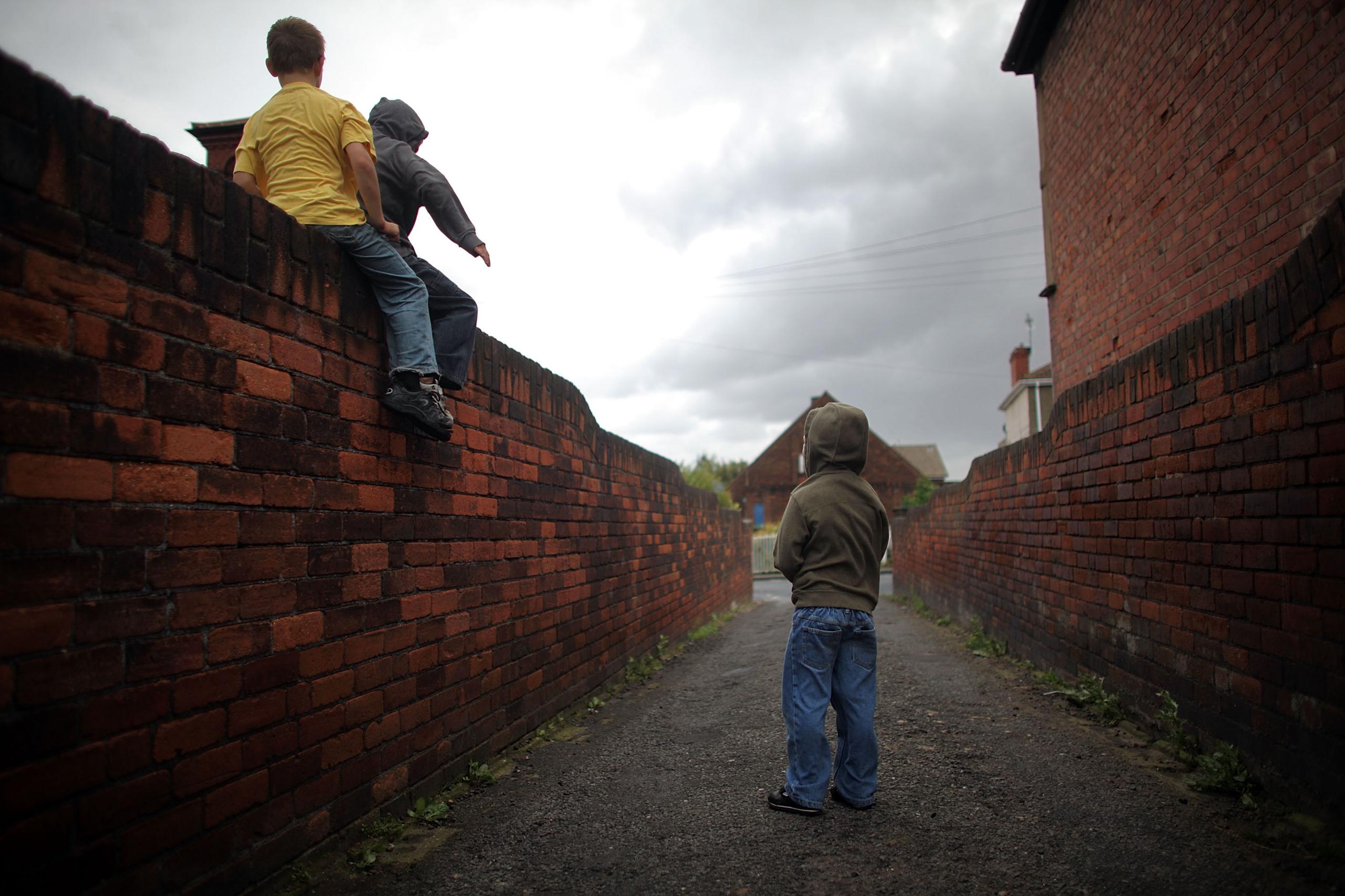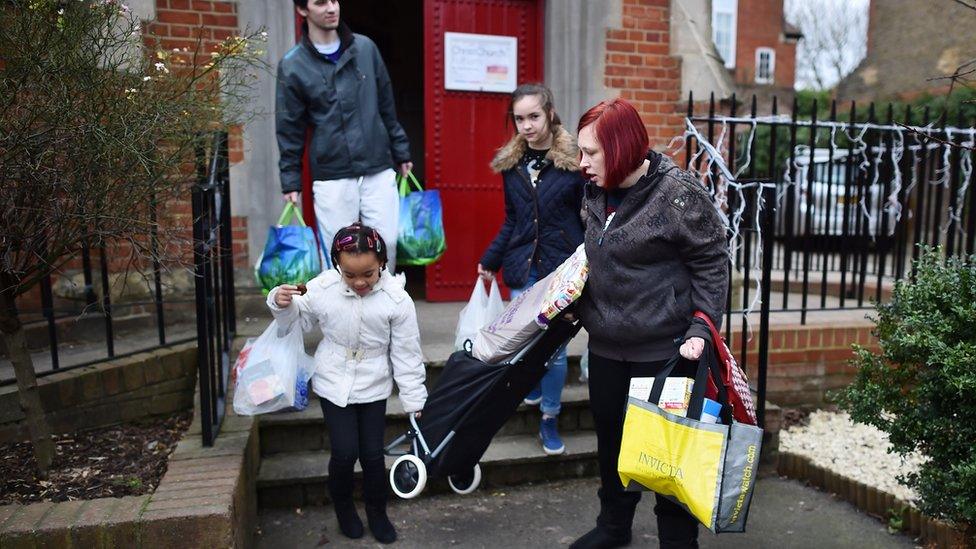Tax credits: Winners and losers
- Published

Three million people will have particular reason to listen in to the Spending Review and Autumn Statement on Wednesday, as the chancellor announces what is to become of his plans to cut working tax credits.
They are the claimants, who, according to the Institute of Fiscal Studies (IFS), stand to lose an average of £1,000 a year from April 2016.
After losing a vote in the House of Lords, the chancellor, George Osborne has promised to soften the transition to lower tax credits, but without losing sight of the £4.4bn in eventual savings to the Treasury.
So what are the chancellor's options, and how will those three million people be affected?

What could Osborne do?
He could phase in the cuts over two years, rather than one.
He could reduce tax credits only for new claimants.
He could abandon the cuts altogether.
Eventually tax credit payments will get smaller anyway, as claimants switch to Universal Credit. But any postponement of the cuts would reduce the £4.4bn in annual savings. So either the chancellor would need to find large cuts elsewhere, or the Treasury would have to live with the deficit beyond 2020. Currently the Office for Budget Responsibility (OBR) is predicting a budget surplus by then.
If the cuts are reduced, the chancellor will need to be careful not to break the government's self-imposed welfare cap, which limits the amount of total benefit spending, and which comes into force in April 2016.

What are tax credits?
Tax credits are nothing to do with paying tax. They are a series of benefits introduced by the last Labour government to help low-paid families. There are two types: Working Tax Credit (WTC) for those in work, and Child Tax Credit (CTC) for those with children. Tax credits are gradually being included within Universal Credit, which is being rolled out across the country.

4.5m people are eligible to claim tax credits

Who qualifies for Working Tax Credit?
The idea of this benefit is to encourage people to work. As an example, most people will need to work at least 30 hours a week to qualify. If you have children, are under 25 or over 60, you will need to work 16 hours a week. You can earn a maximum salary of £13,253. Currently claimants earning less than £6,420 receive the full entitlement. As they earn above this level, their payments are reduced.

Who qualifies for Child Tax Credit?
To qualify for CTC you need to have at least one child, but you don't need to work. As an example, those with one child can earn up to £25,000 and still qualify for a payment. For those also claiming WTC, anyone earning less than £6,420 (the income threshold) will receive the full entitlement. For those not claiming WTC, they can earn up to £16,105 before seeing a reduction in their payments

What changes are currently planned for April 2016?
The income threshold for Working Tax Credits - £6,420 - is due to be cut to £3,850 a year. In other words, as soon as someone earns more than £3,850, they will see their payments reduced. The income threshold for those only claiming CTCs will be cut from £16,105 to £12,125. Osborne could tweak these thresholds.
The rate at which those payments are cut is also due to get faster. Currently, for every £1 claimants earn above the threshold, they lose 41p. This is known as the taper rate. But from April 2016, the taper rate will accelerate to 48p. So for every pound earned above the threshold, claimants will lose 48p. Again, Osborne could tweak the taper rate.
There are due to be similar reductions for those who claim work allowances under Universal Credit.


Who will be the losers?
The IFS has said that three million families are likely to lose an average of £1,000 a year, as a result of the previously announced changes to tax credits.
But the government has argued that the introduction of the National Living Wage (NLW) will raise incomes for many people when it is introduced in April 2016. New personal allowance thresholds will also mean many people will pay less income tax.
The Resolution Foundation - which campaigns for low and middle-income families - has analysed all the changes, taking into account the NLW and new income tax thresholds.
It claims that by 2020, a low-earning single parent, with one child, who works 20 hours a week, and who earns £9.35 an hour, will end up £1,000 a year worse off.
A low-earning couple with two children, also on £9.35 an hour, will be £850 a year worse off. However, a childless middle-earning couple will be £350 a year better off, as a result of the new personal tax allowance.

Who will be the winners?
Chancellor George Osborne says that anyone who is working full-time on the National Living Wage will be better off, after the tax changes are taken into consideration. However most people claiming tax credits are likely to be working part-time.
The amount anyone can earn before having to pay income tax - the personal allowance - rises to £11,000 in April 2016, with the aim of reaching £12,500 by 2020.
The Treasury says higher income tax thresholds have saved basic rate taxpayers £825 a year each since 2010, with 3.8 million people taken out of the tax system altogether.
The government is also doubling the amount of free childcare available to working parents of three and four-year olds, from 2016. It says 600,000 families will benefit. It will be worth an extra £2,500 a year.


What is happening with other benefits?
The actual level of tax credits, along with all working-age benefits, will be frozen until April 2020. This is scheduled to save another £4bn. If inflation were to continue at its current level of zero, the effect on claimants might be minimal. But inflation is expected to rise again to the target rate of 2% within two years. However, Osborne is unlikely to row back from this commitment, as it is a freeze rather than a cut.
Nevertheless, analysis by the IFS suggests that those in work, but receiving low salaries, will be hardest hit by the changes.
The calculations were made before taking into consideration the forthcoming NLW, or tax changes.
As the chart above shows, those in the second poorest category of workers are likely to lose more than £1,200 a year. By contrast, the richest 10% stand to lose less than £400. Only those in the ninth richest category will gain.
In a subsequent analysis, external, the IFS said the NLW would go 26% of the way to compensating working households for the forthcoming loss of benefits. But it said households with someone in paid work would still end up £550 a year worse off, on average.

What are the planned changes from April 2017?
From April 2017, those starting a family will no longer be eligible for the family element of tax credits - for CTC, that is £545. The equivalent in Universal Credit, known as the first child premium, will also not be available for new claims. In addition, new tax credit claims will be limited to two children. In other words no allowance will be made for a third or fourth child.
The government has insisted that no existing claimants will lose money as a result of this change. Again, Osborne is unlikely to change this.
The Resolution Foundation says a family with three children, making a claim after April 2017, could be £3,450 a year worse off than under the current system.